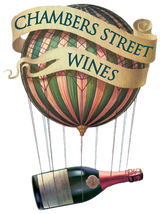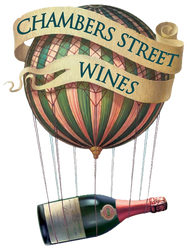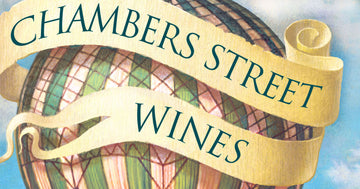New releases from Les Donneurs de Temps!
9/19/23 -

The Jura is a region full of unique characters, from Jean-Francois 'Fanfan' Ganevat, to country bumpkins and organic pioneers Gerard and Christine Villet, cult producer Alice Bouvot, the magnanimous Evelyne and Pascal Clairet from Domaine de la Tournelle (RIP Pascal)...the list goes on. I met a wild French couple in Barcelona in 2019 that made Chateau-Chalon, never exported, never added sulfites (maybe they were in the AVN a long time ago?), and seemed to want everyone to drink and party, but I still to this day don't know who they were! For me there is also a fellow who I always found very interesting, one Guillaume Gilet, who started a humble domaine called Donneurs de Temps about a decade ago.

Our sifu, David Lillie, reached out to Guillaume many years ago (around 2016) and I suppose due to my tendency to be in France more than him at the time (i.e. once in the Summer and not just for the Winter trip), I was the first Lillie who had a chance to spend a day with Guillaume in the vines and at his tiny work-in-progress cellar, which I imagine is a bit more legit now than it was when he and his father were laying bricks for the foundation of his new cave. I say I found Guillaume interesting mostly because of my own introspection. I was my normal outgoing self, but was also a bit uneasy and not so confident at the time. I think it was my first trip to France to visit winemakers on my own, without being part of a family duo and following my father's lead. My French wasn't great, but I don't think that mattered. Mostly, I was coming into the meeting in a bit of a fast-paced, dare I say New York state of mind, a bit because of my nature and upbringing and a bit because I was nervous. No I didn't just come from a visit with Stephane Tissot (which would of course explain any excitement or nervy energy I might have had - how can you visit Stephane and not be energized!), I was just still trying myself on for size. My visit with Guillaume was memorable because I felt I experienced time in a different way. I didn't have to slow down, but I did have to step away from my own expecations and methodic thinking. We spoke about the world, about the vines, his project, his philosophy, but all across the day, not at one specific juncture. He spent time to think before he spoke, he spent time in vineyards that he knew quite well, taking in the quiet natural beauty, and I ended up doing the same. We sat, much like old friends who know they don't have to break the silence out of any need. I remember that quite vividly, and I remember really liking Guillaume, a deeply thoughtful, caring, warm and inquisitive human who I immediatelly connected with.
I suppose some of you might be wondering about the wines! Guillaume's project is called Donneurs de Temps (Givers of Time), and came about without bank loans or any inherited vineyards (though he spent about a decade traveling and making wine in various locales, he is not from a winemaking family). The project involves exchange, but most often this is the time that people give in exchange for room or board, or just out of friendship (hence the name "Givers of Time"). His mother and father have helped with carpentry, vineyard and office work. Christine and Gerard Villet, with whom Guillaume worked for several years, "lent" Guillaume a plot in the beautiful Mailloche vineyard, on the condition that he continued to farm it organically as they have for decades. Friends have helped with bottling, harvest, occasional agricultural chores, artwork, musical interludes, you name it!

Though not a collective by definition, Donneurs de Temps is a collective in spirit and philosophy. Guillaume started with a vision and like-mided people share in it and support him and each other through their work together. The wines don't give time, but they do get time! The current small shipment Guillaume sent is mostly 2018 wines that are charming and immediately enjoyable out of the bottle, something that is often hard to come by while we chase scarce bottles of 2021s from the Jura that many of us will drink way too soon. The whites are fascinating, textured and both intimately Jura while also other-wordly. The Poulsard is fine and balanced, a faint brownish red brick color in the glass, whispy but pure-fruited and energetic. The Macvin, though it's not referred to as a Macvin (If it's made like a Macvin and tastes like one of the best Macvins you've ever had, then it's a Macvin!), is delicious. A rare delight for some, mostly a curiosity for others, any chef you know will get a total kick out of this wine. One chef friend of mine thought of doing a rendition of Key Lime pie with this wacky, slightly sweet Jura specialty, but with a preserved lemon approach instead of the lime. I am sure there are countless salty/savory dessert or food pairings that would be quite trippy with this bottle! We'll get to the wines now, and encourage all of the Jura geeks to not JUST get the Poulsard. We know reds are rare and hard to come by, but these whites are unlike any others in the Jura. Not in any way better than, just worth exploring and experiencing, and not to be missed!
-Eben Lillie
We recommend anyone who is interested and can read French to visit Guillaume's nice website at lesdonneursdetemps.fr
We include some translation of the website below, along with photos from a visit in 2017:

"This page is a small door open to the World in order to show a different way of conceiving life, work and wine. It probably took a bit of chance or even luck, why not, to get here. As the name of our company indicates, time is at the heart of our concerns. It seems important to us to have control over it during crucial stages of winemaking but to give it its full place during work in the fields, in particular by minimizing mechanized work, limiting the use of phytosanitary products and especially by using “Time Donors”, these people, who graciously offer a little of theirs (in exchange for room and board) to help my business move forward...
After studying chemistry and then viticulture, I opted for a ten-year wine tour of France. Not coming from a family of winegrowers and therefore not owning any land, I worked on sixteen farms of different sizes practicing mainly organic viticulture within different terroirs. These multiple experiences allowed me to lay the foundations of my installation project. My main concern has been and still is to develop a production model (scheme) that allows me to make a living from my passion without it being to the detriment of the sustainability of nature and humans. Doing things that have meaning led me to create, in 2012, “Les Donneurs de Temps”, a 1.5 hectare wine estate. The acquired plots had been organically farmed for more than ten years and I requested organic certification with the 2014 vintage. The grapes are obviously grown and then vinified without synthetic organic products (products derived from petroleum). To protect and help my vines produce, I only use products that exist naturally on earth: sulfur, copper oxides, clays, talc and plant herbal teas. Weed control is achieved by mowing and mechanical and manual soil work. The latter is fertilized once a year by incorporating Arboisian sheep manure. Generally speaking, I try to reproduce ancestral gestures that respect natural rhythms and common sense in the vineyard. And of course, during winemaking, I choose to limit handling as well as inputs and this is why my wines can be described as natural wines. The company “Les Donneurs de Temps” was, in particular, born from the observation that operations, as they are designed, generate a huge amount of waste. On the other hand, they remain very fragile due to the enormous investments that the agro-economic model favors. Out of conviction, “Les Donneurs de Temps” was therefore created without recourse to loans or subsidies, so as not to have to bear disproportionate financial costs and maintain a certain freedom. This was possible because I am surrounded and I chose to occasionally have a complementary activity. More than a domain or an operation, “Les Donneurs de Temps” is a transition which brings together people, from diverse backgrounds, who share these human and ecological values and more particularly those of mutual aid, the transmission of knowledge and the exchange of know-how. My goal is to live with dignity from my work and to share my emotion through my wines...
Since the 2012 vintage, all my wines had, upon analysis, less than 30mg/L of total SO2. All vintages from the 2012, 2013 and 2015 vintages had no added sulfur. But, upon analysis, they were found with more than 10 mg/L of total SO2 (produced by yeast). In 2014 and 2017, the red vintages were sulfited at 2g/hL (20mg/L of SO2 added). In 2016, all vintages received 1 to 2g/hL of SO2. [We're not sure on the levels of today's wines but you get the gist!]

The plot that I cultivate on the Mailloche terroir was lent to me, in return for good care, by Gérard Villet, winegrower and friend. It was planted in 1965 and has been certified organic since 1991. This plot, which he calls “Chez Nano”, is planted mainly with Poulsard, at the top, and Chardonnay, at the bottom. The grape varieties are mixed in the environment and we also find a few vines of Pinot noir (a Lignan des Savagnins and Poulsards Muscatés). The soils are gray marl, which gives this mineral character to the wines. These soils are very difficult to work due to their concentration of clay and the outcrop of water sources during the vine's vegetative period. For the vine to produce, the soil must be worked in order to limit competition from other native plants. But the ground is very rarely ready to accommodate the passage of a tractor due to the presence of these sources [i.e. it's really muddy!]. Being, certainly, too young and too spirited, I always want to work the soil too early. It is therefore too humid and in this case we do more harm than good!!! I then asked Gérard for advice to teach me how to read and understand this terroir. Depending on the vintage, I make the “Marnes Grises” cuvée at the top of the plot with Poulsards and a little Chardonnay. The Chardonnays from the bottom are blended with another plot called "Eliott", to make a direct pressing Chardonnay.

Eliott and Lukas are two adjoining plots located at Lieu-dit “des Nouvelles” in Arbois. Eliott is a tribute to the son of my best friend and his wife. It was planted in 1990 with Chardonnay. I acquired it in 2014. It had, moreover, been organic for more than 5 years. It is with this plot and the bottom of the Mailloche that I produce my pure or blended Chardonnay vintages.
Lukas is located above Eliott and it is the first plot that I planted in May 2016 with my parents. This is Savagnin in a tall stem to promote aeration, tillage and manual work.
“Les Anges” is a plot of Savagnin planted in 1990 and converted to organic for more than ten years. However, the change in driving style traumatized him and the top of the plot had to be torn off. This plot, acquired in 2014, still does not produce enough to be viable. Therefore, I plan to replant the top at the end of 2019 or in spring 2020."


